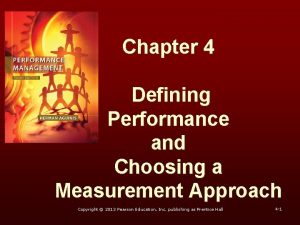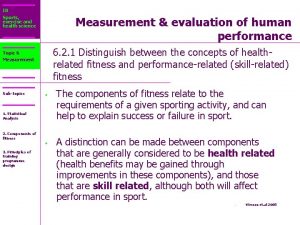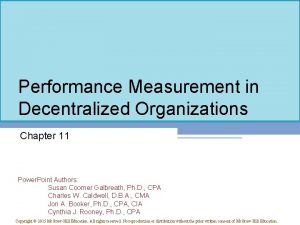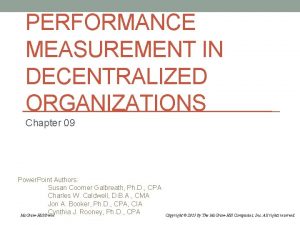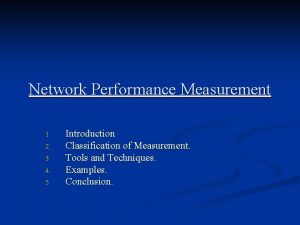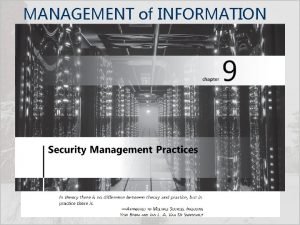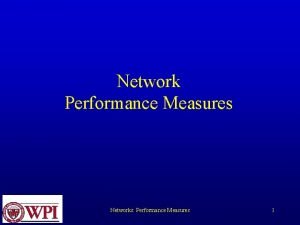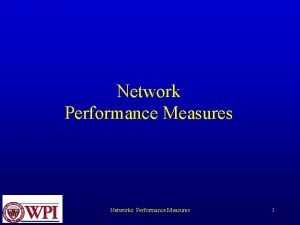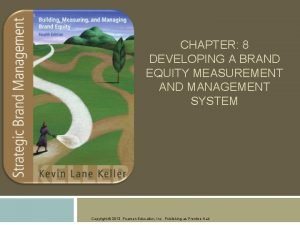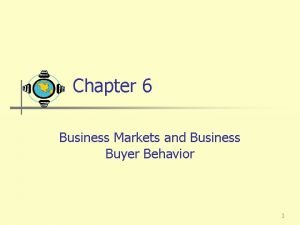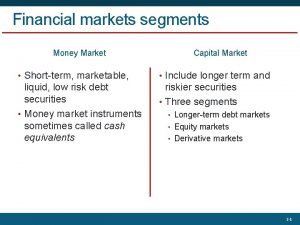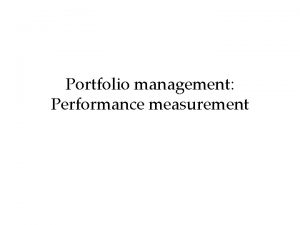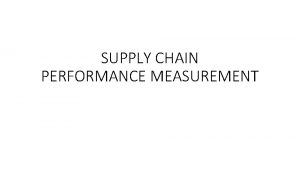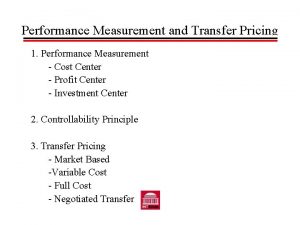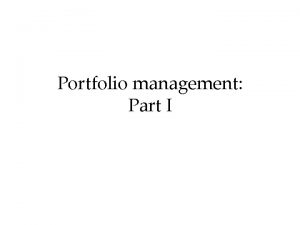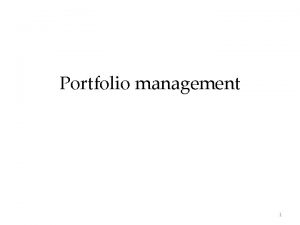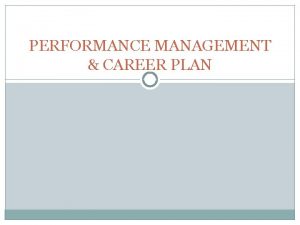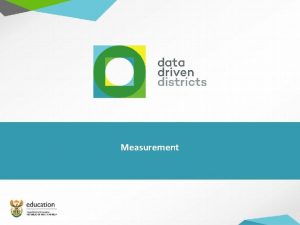Portfolio management Performance measurement Performance and the Market

























- Slides: 25

Portfolio management: Performance measurement

Performance and the Market Line E(Ri) E(RM) RF Undervalued ML M Overvalued Risk. M Note: Risk is either b or s Riski

Risk-adjusted returns • The ex post rate of return has to be adjusted for risk • If the fund beneficiary has other well diversified investments, then the risk should be measured by the fund’s beta • If the fund beneficiary has no other investment, then the risk should be measured by the fund’s total risk (i. e. volatility)

Measures of performance based on riskadjusted returns • Sharpe ratio: Where is the average return of the portfolio over an interval Where is the risk-free return over the same interval Where is the standard deviation of the return on the portfolio

E(Ri) B Market line A M E(RM) E RFR D C

• Treynor ratio: Where is the beta of the portfolio.

E(Ri) B Market line A M E(RM) E RFR D C

Sharpe vs Treynor • The Sharpe and Treynor measures are similar, but different: – Sharpe uses the standard deviation, Treynor uses beta – Sharpe is more appropriate for well diversified portfolios, Treynor for individual assets – For perfectly diversified portfolios, Sharpe and Treynor will give the same ranking, but different numbers (the ranking, not the number itself, is what is most important)

Sharpe & Treynor Examples

Jensen’s Alpha a>0 a=0 a<0 Risk Premium • Jensen’s alpha is a measure of the excess return on a portfolio over time • A portfolio with a consistently positive excess return (adjusted for risk) will have a positive alpha • A portfolio with a consistently negative excess return (adjusted for risk) will have a negative alpha 0 Market Risk Premium

The role of analysts

What do analysts do? • Gather information on the industry or individual stock from customers, suppliers, firm managers etc. • Analyze the data. • Form earnings estimates and make recommendations to investors. • Involvement in investment banking activities. • Sell-side vs. buy-side analysts

• Teams of analysts tend to become bigger and more international. (Global Media Team of Merrill Lynch has 40+ analysts covering more than 200 companies. Most European media companies are followed by 20 to 25 analysts) • Earnings forecasts are less confidential. Media diffuse analysts forecasts and recommendations. • Companies keep track of analysts’ forecasts and recommendations and rank these analysts. • Analysts’ job is becoming more commercial, as they have to sell their research to clients.

Analysts’ compensation The compensation is based on: • Perceived quality Institutional Investor poll of institutions and fund managers ranks analysts according to: stock picking, earnings estimates Analysts earn 2 or 3 times their basic salary in bonuses if they get a high rating in the Institutional Investor poll. • Ability to generate investment banking revenue • Job offers from competitors

Performance of analysts on the Institutional Investor All. Americans Research Team Institutional Investor asks 2000 money managers to evaluate analysts on the basis of stock picking, earnings forecasts and written reports. Position in the poll can be viewed as a proxy for relative reputation. All-Americans analysts: 1. Produce more accurate forecasts. 2. Make more revisions. 3. Have higher impact on prices.

What are the conflicts of interest for analysts? One the one hand, IB want their individual investors clients to be successful over time. At the same time, several factors affect the analyst’s objectivity. Investment banking relationships Underwriting and M&A advisory are lucrative activities. Clients want: 1. 2. Analyst coverage, otherwise investors will not be interested in the company. Positive recommendations from analysts (M&A and underwriting). IB want positive coverage in order to attract clients.

Positive coverage also reduces the necessity for price stabilization by the underwriter when the underwriting contract stipulates that underwriters must support the price in the aftermarket. Trading Conflicts of interest may arise when a firm trades securities covered by the firm’s analysts, because analysts’ recommendations may impact the share prices. Compensation Analysts’ remuneration depend on (i) reputation, (ii) investment banking revenue generated.

Optimistic bias • The “Sell” or "Strong sell" recommendations represent 3% of all recommendations, while “Buy” or “Strong buy” represent 53%. • The median earnings growth forecast is +14%, while the actual median earnings growth is +9%. • This bias can also be explained by cognitive reasons: Underwriters tend to believe that the firms they underwrite are better than average.

Does it pay to be optimistic? • Accurate analysts are more likely to experience favorable job separations (i. e. move to larger IB). For instance analysts who are extremely inaccurate are 62% more likely experience unfavorable job separation than average analysts. Those who are extremely accurate are 52% more likely to experience a favorable job separation than average analysts. • After controlling for accuracy, optimistic analysts are more likely to experience favorable job separations (+38% w. r. t. average analysts).

• Among analysts who cover stocks underwritten by their brokerage houses, job separation depends less on forecast accuracy and more on forecast optimism. • Job separations depend less on accuracy and more on optimism during the late 1990 s than compared to earlier and later periods.

Affiliation and recommendation bias (Michaely and Womack (1999)) • Does an underwriting relationship bias analysts’ recommendations? • Do underwriter's analysts tend to be overly optimistic? • Does the market correctly discount overly positive recommendations of affiliated analysts?

Findings: • Lead underwriter analysts issue more “Buy” recommendations on the IPO than other analysts. • The market responds differently to the announcement of “Buy” recommendations by underwriters (+2. 7%) and non-underwriters (+4. 4%). • The long-run post-recommendation performance of firms that are recommended by their underwriters is significantly worse than the performance of firms recommended by other analysts.

Lin and Mc. Nichols (1998) • No difference in the returns to affiliated and unaffiliated analysts “Strong Buy” and “Buy” recommendations, however the returns to “Hold” recommendations are lower for affiliated analysts. • Suggests that analysts are overoptimistic when they issue “Hold” recommendations. • Affiliated analysts strategically avoid “Sell” recommendations.

The effect of experience • Inexperienced analysts are more likely to lose their job for inaccurate earnings forecasts. • Inexperienced analysts make more conservative forecasts, they deviate less from the consensus. • Even after controlling for private information, inexperienced analysts behave more conservatively than experienced analysts.

Implications for investment banks • • • “Analyzing the analysts” hearings before the US Congress in 2001. Securities Industry Association released “Best Practices” guidelines to enhance analysts credibility. In 2002 Merrill Lynch agreed to pay $100 m and reorganized its stock research department to settle a New York state probe of allegations that it issued overly optimistic research. Salomon Smith and Barney agreed to pay $400 m in 2003. Some individuals analysts paid up to $15 m in fine.
 Positioning targeting and segmentation
Positioning targeting and segmentation Market leader challenger follower nicher
Market leader challenger follower nicher Progress and performance measurement and evaluation
Progress and performance measurement and evaluation Progress and performance measurement and evaluation
Progress and performance measurement and evaluation Portfolio design for students
Portfolio design for students Result approach in measuring performance
Result approach in measuring performance Defining performance and choosing a measurement approach
Defining performance and choosing a measurement approach Measurement and evaluation in human performance 5e download
Measurement and evaluation in human performance 5e download Vertical jump adalah
Vertical jump adalah Bars rating scale
Bars rating scale Performance appraisal process
Performance appraisal process Performance measurement in decentralized organizations
Performance measurement in decentralized organizations Performance measurement in decentralized organizations
Performance measurement in decentralized organizations Network performance measurement tools
Network performance measurement tools Nist sp 800-55
Nist sp 800-55 Comparative performance measurement system
Comparative performance measurement system Network performance measurement tools
Network performance measurement tools Quantum performance measurement
Quantum performance measurement Network performance measurement in computer networks
Network performance measurement in computer networks Network performance measurement in computer networks
Network performance measurement in computer networks Performance metrics in computer networks
Performance metrics in computer networks Dr kano's house of tqm
Dr kano's house of tqm Describe the new accountability in terms of romi
Describe the new accountability in terms of romi Primary target market and secondary target market
Primary target market and secondary target market Decision making units
Decision making units Segments of money market
Segments of money market






